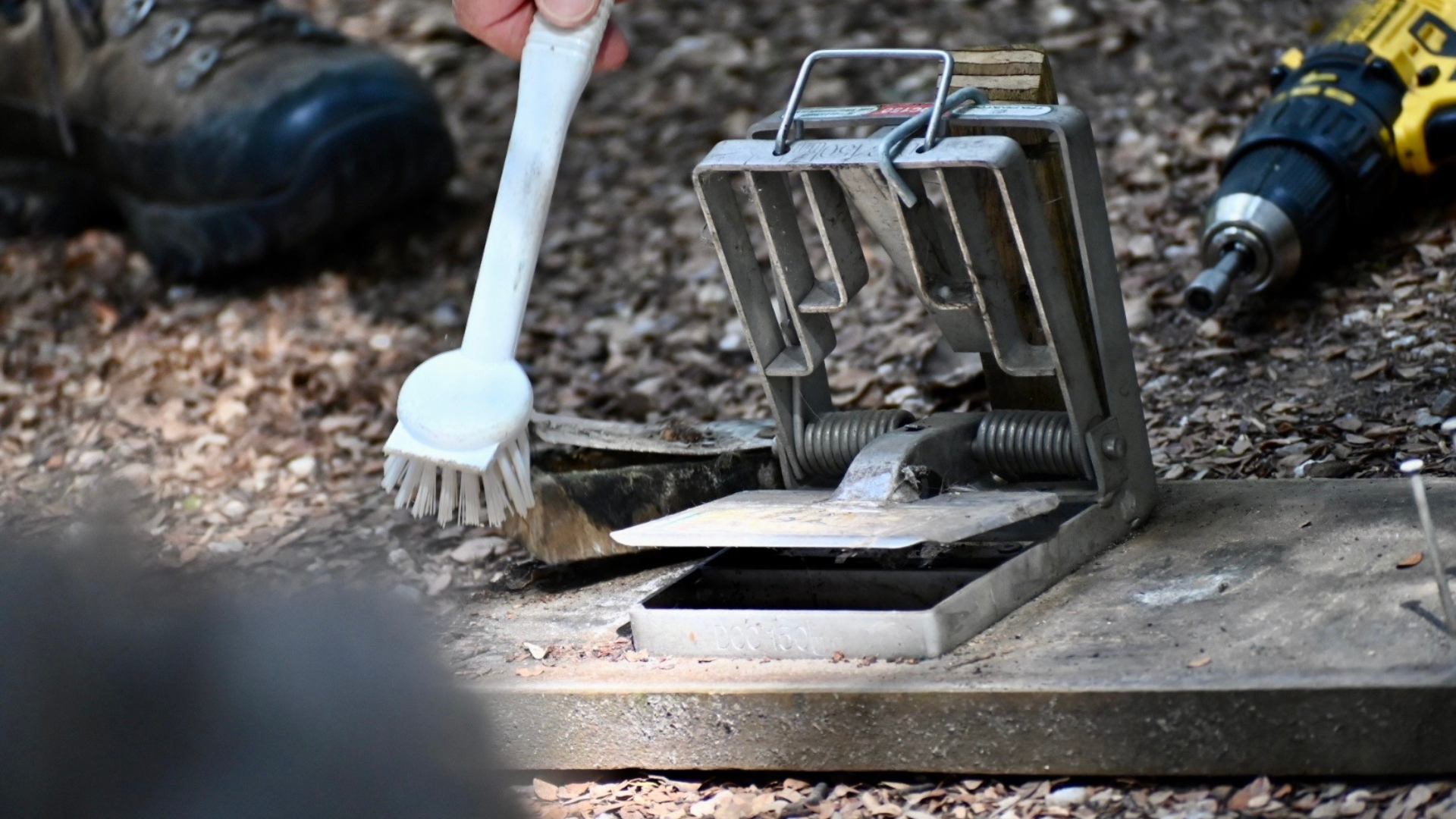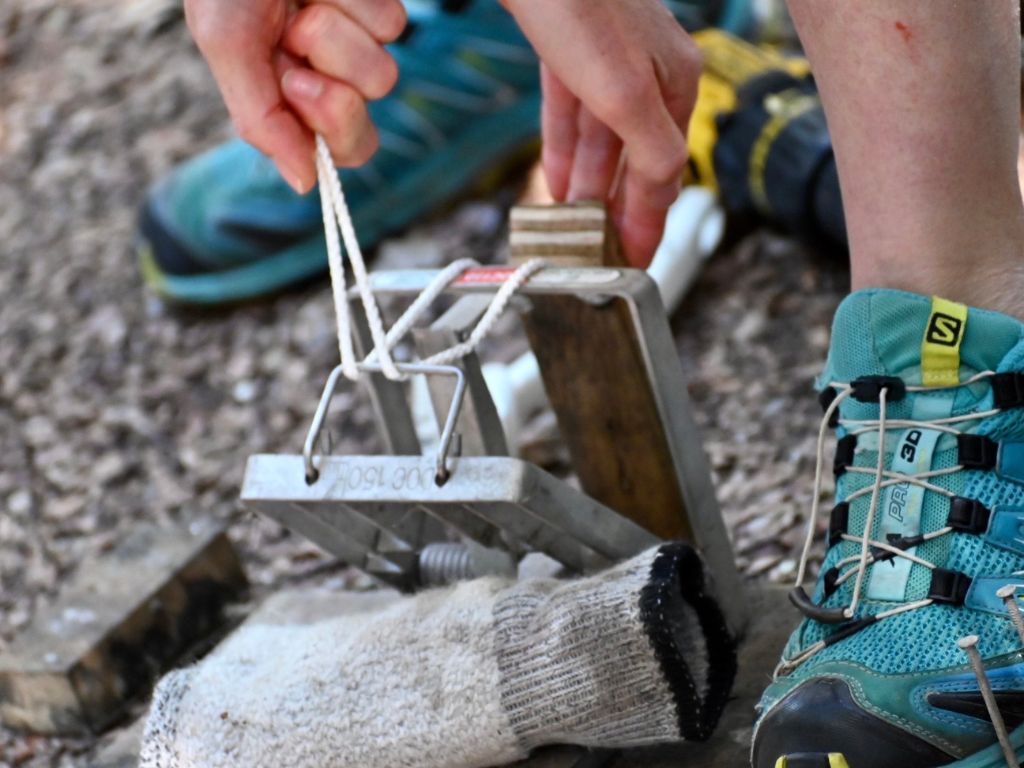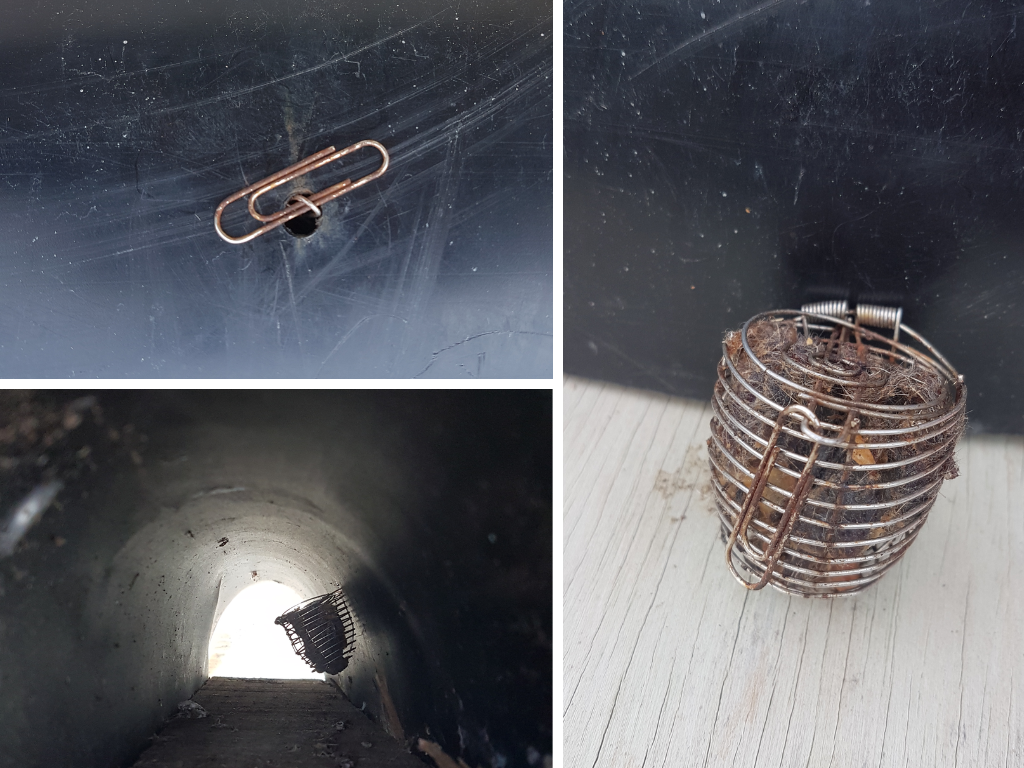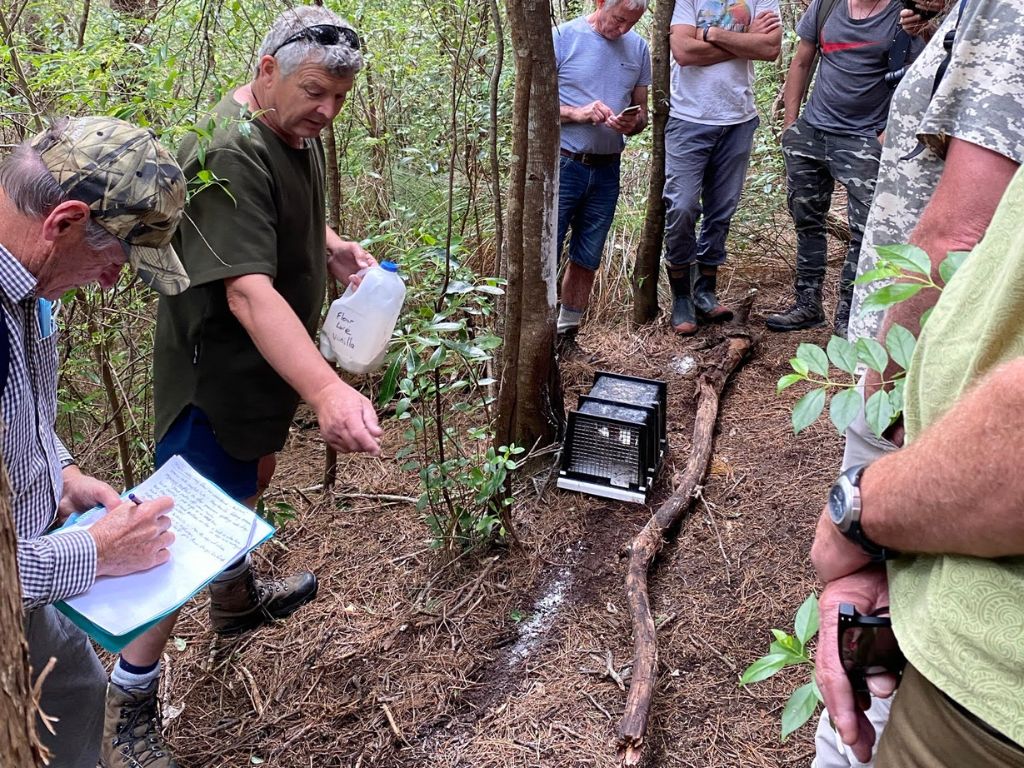Traps can get grungy and lose their effectiveness if we don’t give them some love and attention. Rats, possums or mustelids – whatever your target, a little trap maintenance will help you to keep getting results. So, let’s dive into five super easy ways to look after your trap and keep it catching! Remember to always wear gloves when handling your traps.

1. Time for a test drive: check trap functionality
Always set off your trap before you work with it. But don’t ‘dry’ fire! Setting off empty traps can lead to unnecessary wear and tear.
Instead, set off your trap using a pair of old socks or a soft material that mimics the weight and size of your target. Make sure to set off your trap every few visits to ensure it’s still working well.

2. Get scrubbing: clean and lubricate

Your trap needs a good scrubbing every now and then – we recommend at least once a year.
Grab a scrubbing brush and give your trap a thorough cleaning. Clear out any dirt, debris, and rust that might be clogging up the works. Remember to pay extra attention to the trigger mechanism and those moving parts.
A wire brush or a wire brush wheel fitted to a drill will make easy work of scouring off the rust.
Once it’s squeaky clean, show your trap some love with a little lubrication.
If you have a Victor rat trap, beeswax or linseed oil will do the trick and keep your trap running like a well-oiled machine! You can completely soak it in oil (canola, soya, peanut or any salad oil) by submerging it overnight, and then drain the excess oil off before setting it. The smell of the oil may even help to draw curious rats to your trap.
3. Bedded down: secure your trap
Make sure your trap is level and bedded down well to minimise movement and accidental firing. Additionally, rats and stoats don’t like standing on wobbly things.
Level the trap location in the shape of the tunnel with a small spade, push the tunnel back and forth into the soil, and then stand on top of it to push it down well.
A large rock on top of the trap helps weigh it down too.
You can use pegs or a reinforcing bar to secure traps to the ground to make them stable, and is useful if you have pigs or stock in your area.

4. Outsmart those bait bandits: protect your bait

Is your trap empty, but your lure is all gone? You might have a case of bait thieves.
It’s a frustrating conundrum. Mice and slugs can sneak into your trap for a quick snack – leaving your trap lureless.
Outsmart them. One strategy is to use a mesh tea strainer to hold your lure securely. You can even hang it up high inside the trap box. Why high up? It allows the scent to carry, luring predators in. Placing bait high up on a nail on the side of the trap box has a similar effect.
If that’s not working, another option is tying down a firm bait, such as a dried fruit, firm cheese, or a nut with a thin string (think cotton thread or dental floss) and then smearing it with Nutella or peanut butter.
Mice can be real troublemakers. If they keep getting into your trap, it’s time to bring in the reinforcements. Placing a mouse trap in the back of your trap box will deal with your mouse problem, and the carcass will also attract introduced predators like stoats and rats.
5. Make way, make way: clear the space
Move debris like fallen leaves or overgrown grass away from the entrance of the trap to make it easier for predators to enter the trap.

Now you’re armed with the know-how to keep your trap in good knick. Taking care of your trap will help keep our native wildlife safe and sound – one catch at a time!
If you want tips specific to your trap, check out our tips for looking after your DOC trap and Victor rat trap.

